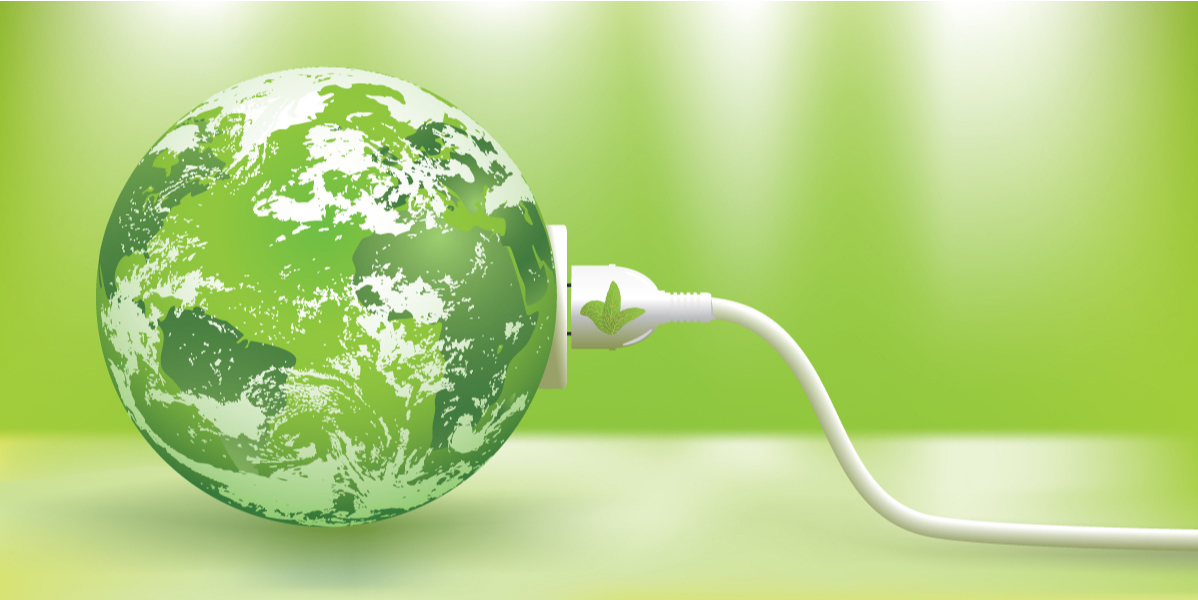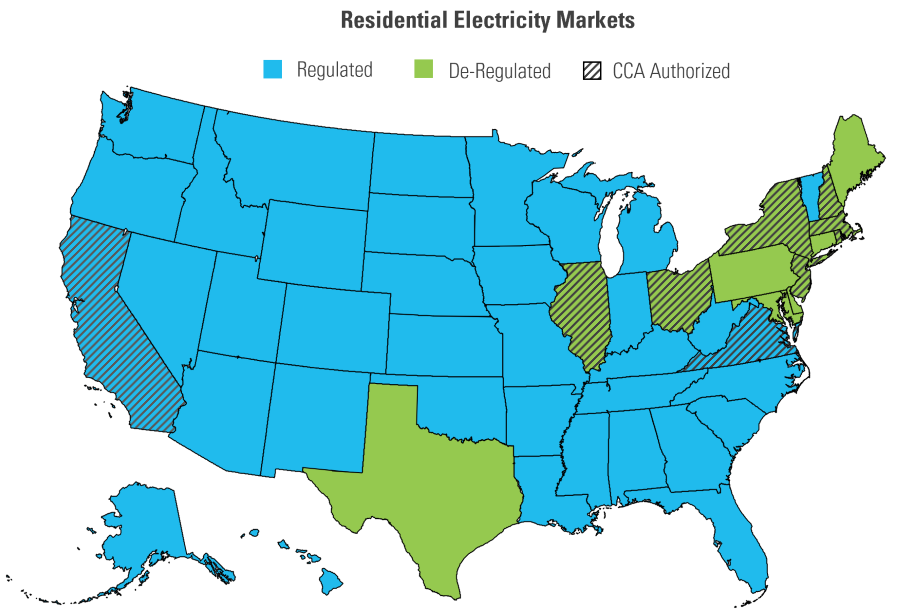Green Power Options
 One way you can do your part to reduce your carbon footprint is by switching to green power. Green power consists of electricity produced from solar, wind, geothermal, biogas, some forms of biomass, and low-impact small hydroelectric sources. Options to switch to green power are steadily growing, so no matter where you live, there is an opportunity for you to make an energy choice that counts and supports a clean energy future. However, to make sure that it is actually green power, EPA recommends that you choose third-party certified green power. See below for a list of options and where they are available.
One way you can do your part to reduce your carbon footprint is by switching to green power. Green power consists of electricity produced from solar, wind, geothermal, biogas, some forms of biomass, and low-impact small hydroelectric sources. Options to switch to green power are steadily growing, so no matter where you live, there is an opportunity for you to make an energy choice that counts and supports a clean energy future. However, to make sure that it is actually green power, EPA recommends that you choose third-party certified green power. See below for a list of options and where they are available.
- Utility Green Power Products (Green Pricing) – Many households have the option to simply opt for green power for their electricity. Utility green power products – often referred to as green pricing – are offered directly from your utility supplier so you can get information on these options by contacting your utility. You can also click here to access third-party certified green power products by state.
- Competitive Green Power Products – Some customers may live in what are referred to as deregulated electricity markets. These are areas where other suppliers, besides your utility, can offer alternative energy sources. If you live in a deregulated state, you can purchase green power from an alternative electricity supplier who is not your default utility supplier. You are billed for the costs of the green power through your utility bill even though it comes from a different source. It basically operates similar to a utility offered green power product, but you can choose from multiple suppliers. Click here for descriptions and links to competitive green power products.
- Community Choice Aggregation (CCA) – In some states, local governments can buy power from an alternative green power supplier on behalf of their residents. For more information and a list of states where CCA’s are available, visit https://www.leanenergyus.org/cca-by-state

- Shared Renewables (Community Renewables) – Many households also have access to what are called “shared or community renewables.” Community Solar is the most popular of those. Specifically, they can buy, lease, or subscribe to a portion of electricity output from a shared system, such as a solar or wind farm. Click here to access third-party certified community solar programs.
- Self Supply – Households can also provide their own green power by installing solar panels on their rooftops to power their homes or even a windmill on their property. Roof-top solar is the most popular form of residential self supply.
- Renewable Energy Certificates – you may not know it, but every time you purchase green power or supply it for yourself, that green power is represented by Renewable Energy Certificates or REC (1REC = 1MWh). RECs are very important for supporting the growth and credibility of the green power market. Watch this video to learn more about RECs and, in the unlikely case that you have no green power options available to you, you can always purchase a REC. Find out where to get a third-party certified REC here.
What else should I look for when buying green power?
Homes and businesses nationwide are increasingly signing up to get their electricity from renewable resources. In fact, choosing energy from renewable resources is one of the best ways to prepare for a clean energy future. Reduce your electricity usage as much as you can and buy clean energy for the rest. You can purchase through a green power program offered by your local electricity provider or you can buy renewable energy certificates from online sellers. Your purchases increase the demand for renewables, so more will be built.
- How do I know that the green power I’m purchasing is really green? Choosing Green Power that is third-party certified is the best guarantee. When your green power is certified “green” it means you can be sure that your purchase meets nationally accepted environmental standards for resource and product quality and content. If an option you are interested in is not third-party certified, however, it does not mean that it isn’t green. Knowing the fuel type is another way you can evaluate the environmental quality of the renewable electricity you are supporting. Look for fuels that zero to low emissions as part of the power generation process.
- What Are Renewable Energy Certificates and how do they work? A Renewable Energy Certificate or REC is how all individuals or organizations substantiate their use of renewable electricity. Check out this video to understand more. Your provider must retire the REC on your behalf. This is the only way to verify you are using renewable electricity. Most providers do this as a service for their customers. Self-suppliers generate their own RECs and need not worry about retiring. Find out where to get a third-party certified REC here.
